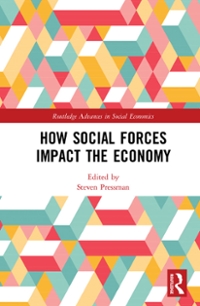Question
1. Which of the following would benefit borrowers of fixed interest rate loans at the expense of their creditors? (5 points) The actual inflation rate
1. Which of the following would benefit borrowers of fixed interest rate loans at the expense of their creditors? (5 points)
| The actual inflation rate is less than the expected inflation rate. | ||
| The actual inflation rate is more than the expected inflation rate. | ||
| Hyperinflation begins to occur in the economy. | ||
| The average price level remains perfectly stable. | ||
| The average price level fluctuates wildly for a sustained period. |
2. Which of the following groups would benefit from an increase in the average price level in an economy? (5 points)
| Individuals and institutions who have loaned money | ||
| Borrowers of loans with rates that automatically adjust with inflation | ||
| Those controlling resources whose prices increased by more than the average | ||
| Those controlling factors of production whose prices decreased during the same period | ||
| The creditors for capital investment loans |
3. Which of the following would explain a shift from AD2 to AD3? (5 points)
| Consumers significantly reduce their typical spending. | ||
| The government increases the income tax rate. | ||
| Imports decrease while exports increase. | ||
| Stock market prices increase. | ||
| There is a general increase in the price level in the economy. |
4. The aggregate demand model dictates that given a price level increase in an economy, (5 points)
| the aggregate demand will shift left | ||
| the aggregate demand will shift right | ||
| the aggregate quantity demanded of goods and services will increase | ||
| the aggregate quantity demanded of goods and services will decrease | ||
| the nominal GDP will increase |
5. An increase in the price level corresponds to (5 points)
| a decrease in aggregate demand | ||
| an increase in aggregate supply | ||
| movement along the aggregate supply curve | ||
| an inflationary gap | ||
| a recessionary gap |
6. A decrease in energy prices in the short run generally (5 points)
| decreases real output | ||
| increases nominal output but not real output | ||
| increases real output | ||
| corresponds to an increase in the unemployment rate | ||
| has no impact on either nominal or real output |
7. Which of the following could occur with cost-push inflation? (5 points)
| An output decrease, employment decrease, and price level decrease | ||
| An output decrease, employment decrease, and price level increase | ||
| An output decrease, employment increase, and price level increase | ||
| An output increase, employment increase, and price level decrease | ||
| An output increase, employment increase, and price level increase |
8. Use the graph to answer the question that follows.



Step by Step Solution
There are 3 Steps involved in it
Step: 1

Get Instant Access to Expert-Tailored Solutions
See step-by-step solutions with expert insights and AI powered tools for academic success
Step: 2

Step: 3

Ace Your Homework with AI
Get the answers you need in no time with our AI-driven, step-by-step assistance
Get Started


